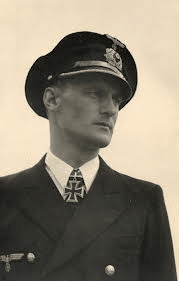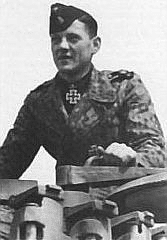The U-107‘s seventh patrol began on August 15, 1942 and this patrol also proved successful. After crossing the Bay of Biscay, Kapitänleutnant Harald Gelhaus radioed to Admiral Karl Dönitz at his Kernével headquarters that the boat’s Metox radar-detector equipment enabled the U-107 to successfully avoid attacks by six enemy aircraft. The U-boat’s first two victories occurred on September 3, 1942. At 5:52 a.m. the U-107 sank the British 4,172-ton Hollinside off Portugal; three men perished in the attack. Eleven minutes later, at 9:03 a.m., the U-107 bagged a second ship, the British 4,393-ton Penrose; two men on the target ship died in this attack. Gelhaus then went over a month at sea without another success until shortly after midnight on October 7, 1942 when the U-107 sank the British 14,943-ton Andalucia Star bound from Buenos Aires to the River Mersey. The U-107 safely returned to Lorient on November 18, 1942; she had gone 14,500 sea-miles on the surface and 731 sea-miles submerged. (Dönitz’s Crews: Germany’s U-Boat Sailors in World War II)
**********
Balthasar Woll. Balthasar “Bobby” Wohl was born on September 1, 1922 in Wemmetsweiler in the Saarland; he was an electrician by trade. Joining the SS on August 15, 1941, he fought as a machine-gunner in Russia in early 1942 in the Demjansk Pocket in the SS Totenkopf Division, in the 3rd Company of SS Grenadier Regiment 1 Totenkopf. Wounded in that fighting, he was evacuated to a hospital in Germany, where he received the Iron Cross Second Class and the Wound Badge in Black on July 23, 1942; he would later be awarded the Demjansk Shield. While in the Totenkopf, he received assault gun training. Transferring to the Leibstandarte, he became a panzer soldier, training at Paderborn. At Kharkov in February-March 1943, he served as a tank gunner. At Kursk, SS-Panzerschütze Woll served as the gunner for Michael Wittmann on Tiger 1331 in the Third Platoon from July 5-9. Several sources credit him with destroying thirty-five Soviet tanks during the battle. (Waffen-SS Tiger Crews at Kursk: The Men of SS Panzer Regiments 1, 2 & 3 in Operation Citadel, July 5-15, 1943)

